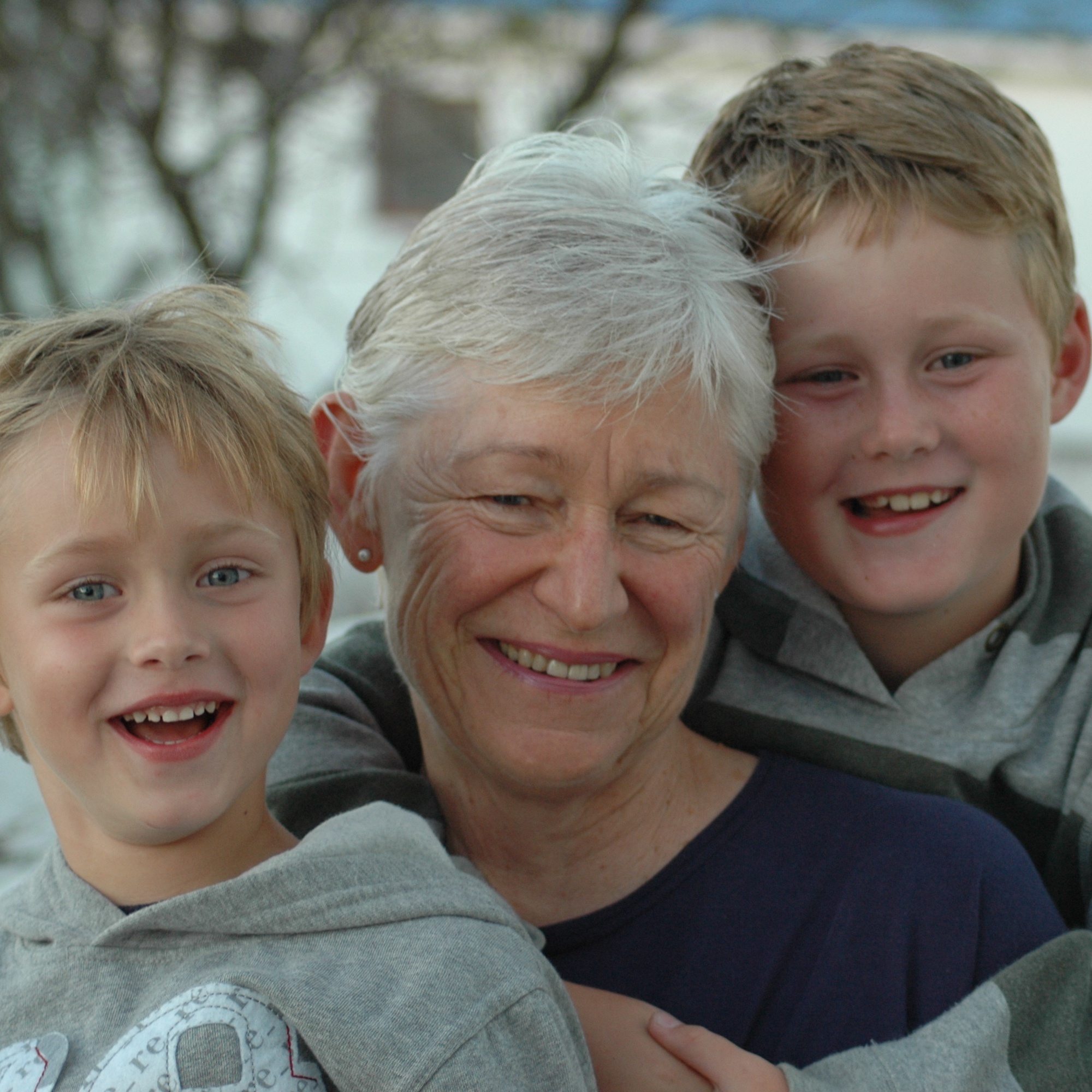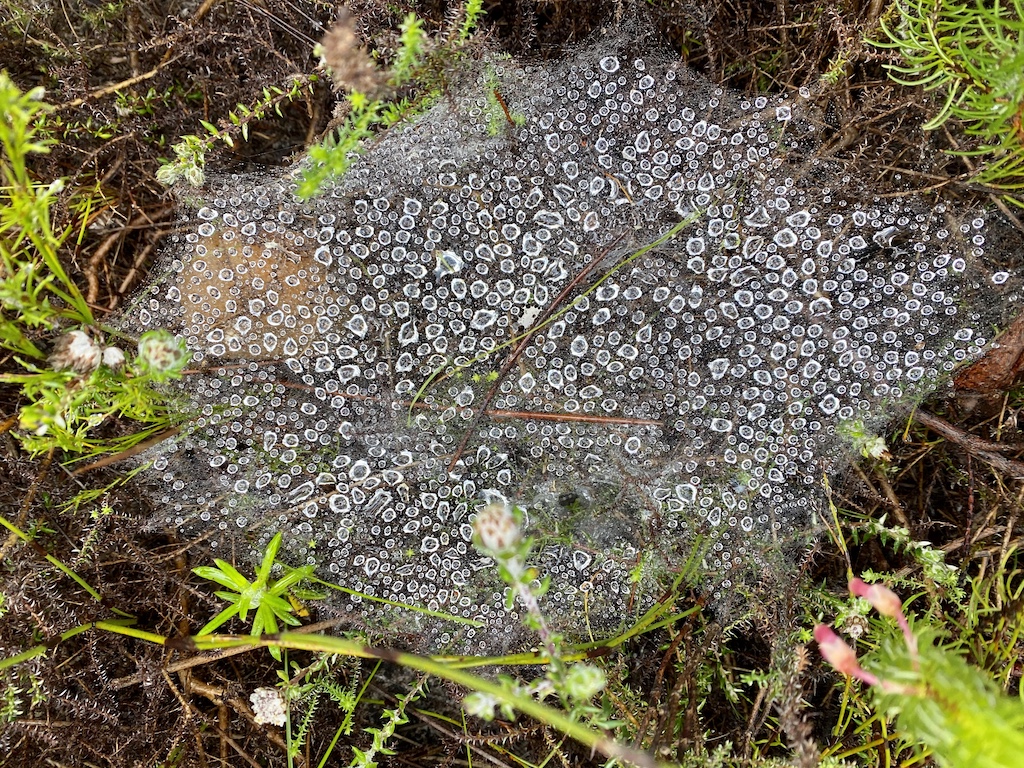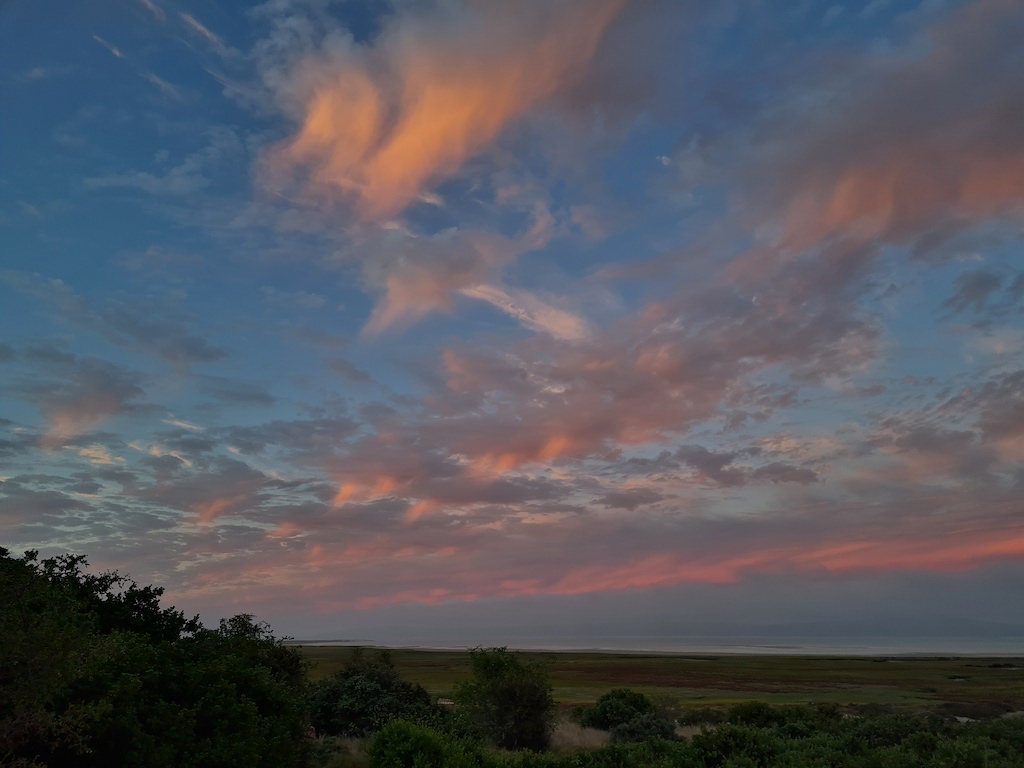“At least I can still become an Adaptive Surfer!” As I surface in ICU a flash of hope captures my imagination, lifts my spirits, and draws me forward with the promise of adventure.
Lying flat ‘splat’ on my back my worldview is limited to perforated ceiling tiles and glaring lights. Thoughtful people like my family position themselves at the foot of my bed in my direct line of vision.
“Why’s your head in a red post-box?” A startling question. I can’t feel or even picture the brace with lateral blocks stabilizing my neck for the Beach-to-ICU journey. Only my facial muscles move now.
Recently my friend and I discussed that first visit. “Visiting you wasn’t a courageous act, I needed to see that you could still breathe, talk and think clearly.”
“When one looks for trouble, one’s sure to find it. The easiest way to do so is to ignore safety rules”. My often repeated mantra with children in my practice. But I entered the water at Kommetjie, a beach well known for its dumpers, alone with my bodyboard at blood-moon high-tide on January 4th 2018 without checking tides, weather or wave-set patterns.
I am pile-driven headfirst into the sand, an arrow hitting a bull’s eye dead on target. My head snaps back. A loud crack and it rebounds forwards. I can’t raise my hand.
The beach shelves steeply close to shore. I stay underwater, curled-up, floating face down in my wetsuit. In the icy water the protective diving response comes into play automatically (Foster & Sheel, 2005). Enchanted by my bodily ‘lightness of being’ and the brightness surrounding me, I marvel at how easily I hold my breath for what seems like a very long time. My glottis closes up as I pass out, giving me a five-minute window of opportunity during which I don’t lose air or take in water.
Serendipitously a small boy playing at the water’s edge spots me and alerts his mother who finds help. The two adults ease my face clear of the water and summon the NSRI. Station 26 ten-member duty-team races to my rescue.

Pamela Kipps Hansford
Physiotherapist
After 25 years of home, school and hospital based general practice on 3 continents Pam opened her neuro practice in Cape Town and worked with people of all ages. Nearby Kirstenbosch Gardens became the ‘outdoor arm’ of her practice. Here she has enjoyed exploring the benefit of connecting with others adventurously in nature, first as a therapist for 30 years and now for the past 3 years as a quadriplegic with family, friends and therapists. These visits bring excitement, relaxation and joy, as does adaptive surfing. This reflects her belief in the interconnectedness of people and nature and highlights the significance of the part the environment plays in each therapeutic engagement.

A blow to the head strong enough to damage the spinal cord causes the tethered brain to bounce back and forth inside the skull leading to brain injuries, including concussion. The first NSRI volunteer to arrive understands instantly my chances of survival are minimal. He knows it’s essential to engage with me on a deep level rather than merely talking to keep me awake. Seated on the beach with his legs on either side of my body he supports my neck, holds my hand, and asks simple questions, all requiring more than a yes/no answer. Some of my responses make sense, others don’t. He’s thrown me a lifeline of human connection which enables me to reach out and take an active part in hauling myself out of the deep.
The NSRI team carries me ‘as-one-unit’ up the sand, immobilizes my spine, loads me into the back of their ‘bakkie’ and drives down the beach, my rescuer at my side. They hand me over to the waiting ambulance crew who deliver me safely into the competent hands of a neurosurgeon I know, like, respect and trust.
I shattered the disc between C4 and C5. A pacemaker inserted before my spinal fusion ‘protects my heart’. The surgeon and anesthetist listened to my concerns and discussed options. I wake up feeling fresh without hallucinations. Compression fractures of the first five cervical vertebrae heal themselves over thirteen weeks with my neck encased in a rigid lightweight brace.
My injury classification is incomplete tetraplegia. Miraculously my contused spinal cord remained intact. My sensation is massively disrupted but ‘spared’ helps me utilize my potential for recovery daily. This despite feeling iron barrel-hoops were being tightened around my shoulders and ongoing neuropathic pain in both feet from ICU elastic stockings two sizes too small.
Knowing my mission was to ‘give everyone good hands’ my neurosurgeon warns me gently not to be too optimistic. “Pam, with a spinal-cord contusion, the hands come back last you know, if at all”.
This spurs me on to engage 100% in a goal-directed collaborative regenerative process supported by my passion for action-learning and reflection in and on practice, an ever-changing network of family and friends, professionals and volunteers, individuals and organizations and the natural environment.

When spider webs unite, they can tie up a lion (Ethiopian Proverb)
Having worked with people who developed extraordinary resilience in the face of adversity, I’d learnt to search for hidden ‘gifts’ in each challenge. Extended periods of sleep are rare in hospitals, but this allows time for reflection. Initially, my ‘network’ resembles the golden-orb spider’s web near my practice front door but soon I realize those who come and go are like members of a dynamic community of ‘social spiders’ whose colonies house hundreds of individuals. With no queens, all spiders co-operate in all tasks.
Many of my most treasured ‘photos’ are ‘those I didn’t take!’ I remember seeing vast stretches of fynbos blanketed by fine silk spiderwebs sparkling with dewdrops at Cape Point Nature Reserve early one morning. Lying in my uncomfortable hospital bed I gather up this delicate blanket to sustain me and give focus to the task at hand.
How can we move beyond patient-centred care to focus on the co-creation of health and well-being?
Everything is impossible until we find people prepared to collaborate with us to make the impossible possible, step by tiny step. In ‘Beyond Independence lies Interdependence’ I suggest that the relational way of life of indigenous people could form the basis for transformational change in healthcare. By focusing on developing quality relationships, we can build bonds that grow from silky filaments to tenuous threads to form the interwoven strands of the fabric of human connection. Multiple strands of collaborative encounter have formed both a safety net and a sturdy lifeline in my adventurous journey of discovery with physiotherapy running as the golden thread through the core of my support lifeline.
“The patient knows the answer if you just ask the right question and look and listen. Ultimately, the patient IS the therapist. Empower them in the treatment process from the beginning.” Kay Shepard’s 2007 Mary McMillan Memorial Lecture “Are you Waving or Drowning?” includes gems like Peter Edgelow’s dictum from her decade-long qualitative research collaboration with three colleagues exploring the characteristics of expertise in physiotherapy master clinicians. “Their philosophy of practice demonstrates the intertwining of patient-centred knowledge” and “clinical reasoning that depends on patient collaboration” with a “focus on functional movement and virtues such as caring and being a moral agent”. They “integrated the science and the art of healing and caring into a single concept” and “moved far beyond recorded knowledge” to “create new knowledge by reflecting on their treatment, outcomes, and interactions with patients and families.”
The essence of co-creation is moving beyond the limitations of professional and academic interdisciplinary teams to embrace a transdisciplinary approach in which all stakeholders join together with a shared passion to co-design solutions collaboratively and have fun seeing what they can develop together. All participants experiences and leadership contributions are valued equally at all times.
The basic adaptive surfing premise is that passion with purpose brings possibilities for people.
Imagine my joy when my dream of becoming an adaptive surfer became a reality exactly 9 months after my accident when I was carried into the water at a celebratory event on Muizenberg beach prone on a surfboard by 12 people looking like the waiters at a Medieval banquet carrying the roast pork into the feast on a huge platter. Volunteers, physiotherapists, family, friends, surf coaches etc all making an equally essential and valuable contribution to having a glorious time in the ocean, a real win-win all around. Truly transformative teamwork and co-leadership at is best all learning and having fun together. I was the only one not tired as the team provided the fuel and energy by powering the operation with me flying high over the waves on joy and encouragement.


1) Thanks for posting this on the 4th anniversary of my miraculous NSRI rescue
2) Much joy developed during the process of co-creating health with others in transdisciplary contexts and at inspiring outdoor venues.
3) IMPORTANT examples include the Kirstenbosch Nattional Botanical Gardens with ‘climbing the mountains’ (using 4 limbs to focus on keeping my CofG within a triangular BoS, promote stability and permit mobility).
4) The OCEAN has provided the glorious experience of #Adaptive Surfing at the Roxy Davis Foundation in Cape Town. Creative support by the Challenged Athletes Foundation has helped make this possible.
5) A GOLDEN THREAD of collaborative physiotherapy supports my lifetime story of connection within rehabilitation, both as a physiotherapist with others and the World Physiotherapy Association (before and after my accident) & subsequently as person lliving with quadriplegia too.
Thank you for telling this story and its meaning. The way your story has unfolded to you and then how you are able to create such meaning initially for yourself and what you are now telling forward to us is profound. The threads/web/filaments as you describe them that we create in all relationships are our bonds to this reality and helps one’s personal search for meaning and shows us that we cannot be isolated from all that is going on in the world around us. If we let this mycorrhizas run and see ourselves as all inextricably interrelated to the entire living earth we may then truly understand interdependence. Accepting this deep interconnectedness with all life may give us a mere chance to build an alternative civilisation that can allow equality and future generations to prosper.
Dear Ross
I am humbled by your response to my Co–creating Health blog post
Thank you very much indeed
Warm regards Pam
Great blog, Pam! Congratulations. I look forward to reading more from you in the future.
Dear Trish
I appreciate your interest and enthusiasm,
thank for your comment Trish
Warm regards Pam
Best wishes for 2022
Pamand heartfelt thanks to all of you at All About Writing
A number of years ago my practice was involved with with a collaborative venture with the paediatric nursing group offering paediatric nurses from all over Africa the opportunity to have a year’s post graduate training in some area of specialisation.
It is run by Red Cross Childrens Hospital in conjunction with UCT. We were fortunate enough to have two at visiting us at a time (a learning partnership observing the action with the goal of learning about communicating health and well-being to children and their families).
One of the very special preshoolers I treated showed us how clearly he understood the concept of friendship as being the basis of transdisciplinary collaboration when he gestured to the 2 nurses observing the session quietly & exclaimed with great delight “And what about the FRIENDS?”
He was reminding me that I should share the videos with them too which I was sharing with him and his dad demonstrating his progress that day).
That was his invitation to them to change roles to rise & become participant observers. They naturally responded immediately which added enormous value to our interractions with increased joy and relaxation and improved performance for all concerned as co-leadership had become a reality ☆ A real win☆win for all
This is a wonderfully insightful blog written by a reflective therapist from her perspective, as the patient. She is a physiotherapist who spent most of her adult life assisting and working with people with neurological challenges and encouraging them to develop their potential, including my family and myself. She is also a brilliant networker and this has been a wonderful part of her interconnected and courageous self-therapy.
Pam, I was very moved with your post. Beautifully written and eloquently tied together. From your perspective as patient and experienced therapist you have given me much to reflect about in my own practice. You really highlighted to me the importance of patient-centred co-creation through collaboration with everyone involved. I work with many patients with ABIs, usually from road trauma and accidents, and agree deeply that they are their own therapist. I certainly see the difference it makes when they have those networks of families, friends and advocates. It has been very challenging at the hospital where I work due to COVID-19 restrictions, which has meant many are not able to see visitors. Co-creation with everyone involved, as you illustrated wonderfully, enables us to maximise recovery and create meaning in what we do. Thank you so much for sharing your story – I am very inspired.